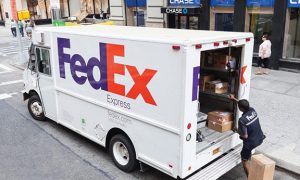FedEx Corp has cracked the code on how to hire in today’s tight labour market: higher wages, better benefits and more flexibility. Who knew?
After offering those three things, the company received more than 111,000 job applications, the most in history and up from 52,000 in the week of May 8, Chief Operating Officer Raj Subramaniam said after the package-delivery giant reported better-than-expected quarterly results. The benefits included increased paid time off and tuition reimbursement. The company has hired more than 60,000 frontline workers since mid-September. Higher wage rates and network disruptions tied to labour shortages resulted in $470 million in additional costs in the three months, but the company expects those cost pressures to moderate in the second half of its fiscal year.
This projected easing doesn’t reflect expectations that wage rates will drop back down; higher pay is “here to stay,†Chief Financial Officer Mike Lenz said on the company’s earnings call. Rather, the relief will come from a return to more normalised operations and a plan to hold onto more seasonal hires than normal after the holiday peak to keep up with robust demand.
“The whole problem was our networks were inefficient,†Subramaniam said. “Even as we speak, we are rerouting packages back to where [they] should be in the first place, and that’s what’s going to make
the difference.â€
There were 11 million job openings across the US economy as of October, and workers are still quitting their positions at a near-record rate, according to Labor Department data. Myriad theories have been offered for why that might be, from a wave of early retirements and Covid health concerns to a lack of child-care options and increased competition in a recovering economy. The real answer might be a mix of all of these, but the pandemic also seems to have inspired a rediscovery of self-worth, particularly among lower-income labourers. Few workers proved more essential to the functioning of the US economy than the FedEx and United Parcel Service delivery drivers and warehouse workers who kept goods flowing to households when many were wary of venturing into physical stores. Their efforts helped drive record sales and reinvigorated the delivery companies’ pricing power. It’s normal that FedEx is paying its workers more — and it can afford to do so.
—Bloomberg
 The Gulf Time Newspaper One of the finest business newspapers in the UAE brought to you by our professional writers and editors.
The Gulf Time Newspaper One of the finest business newspapers in the UAE brought to you by our professional writers and editors.
